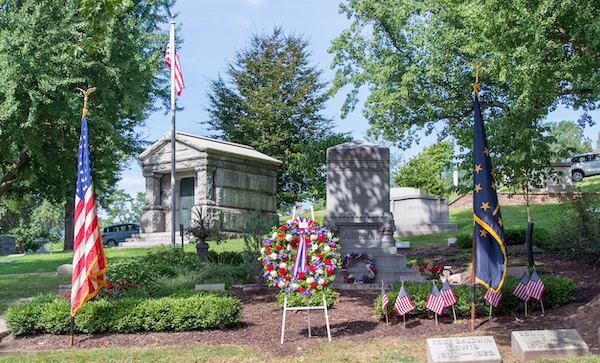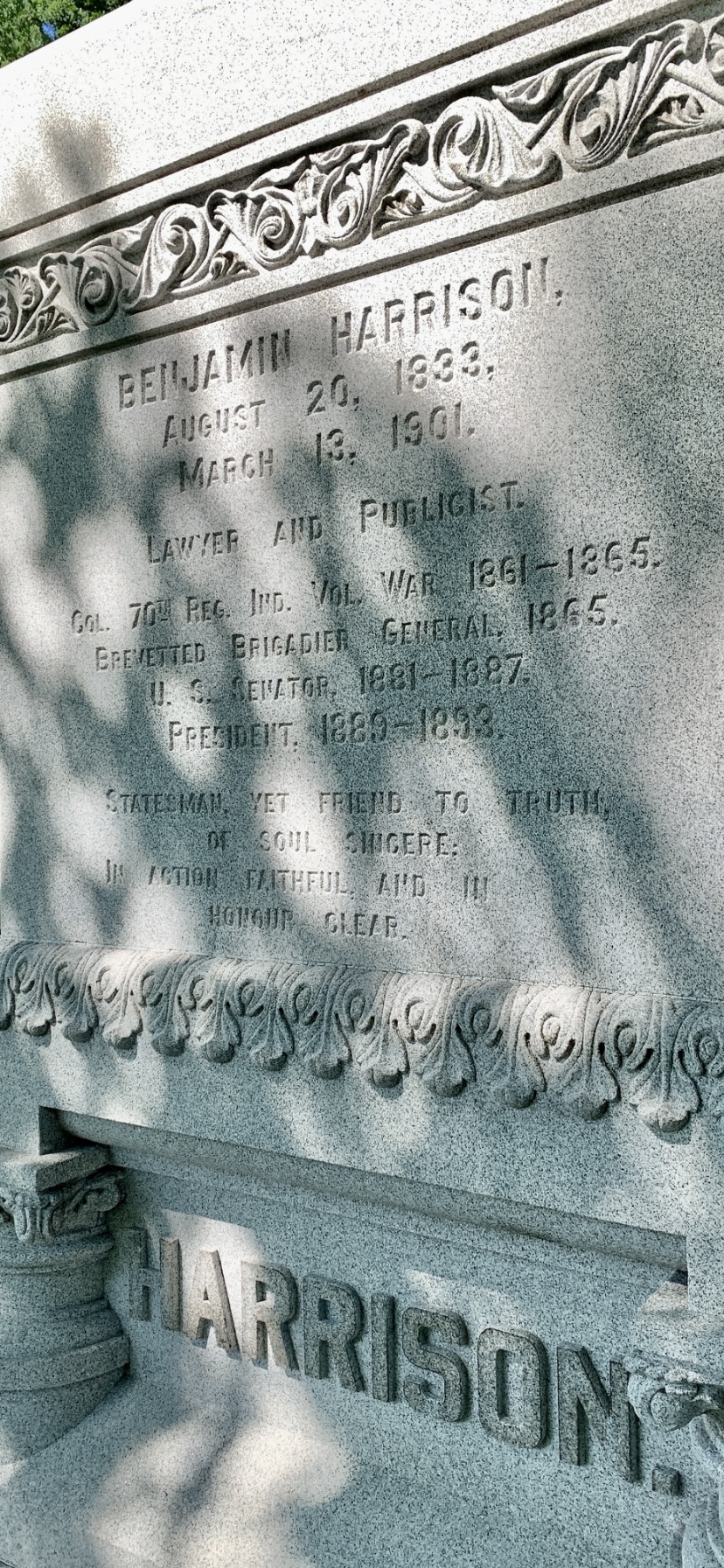Benjamin Harrison
Benjamin Harrison (August 20, 1833 – March 13, 1901)
23rd President of the United States, serving with Vice President Levi P. Morton
In office March 4, 1889 – March 4, 1893
Indiana’s most successful politician in terms of the office he attained, America’s 23rd President, Benjamin Harrison also had one of its best political pedigrees. Born in North Bend, Ohio, in 1833, Harrison was the son of John Scott Harrison, a two-term congressman from Ohio; the grandson of President William Henry Harrison, who had earlier served as Governor of the Indiana Territory; and the great-grandson of Benjamin Harrison, one of the original signers of the Declaration of Independence.
 After graduating from Miami University in Oxford, Ohio and being admitted to the bar in 1853, Harrison moved to Indianapolis with his wife, Caroline. By 1857, he was appointed City Attorney, and in 1862, Governor Oliver Morton asked him to lead the 70th Indiana Volunteers in the American Civil War. During the course of the war, he rose to the rank of Brevet Brigadier General.
After graduating from Miami University in Oxford, Ohio and being admitted to the bar in 1853, Harrison moved to Indianapolis with his wife, Caroline. By 1857, he was appointed City Attorney, and in 1862, Governor Oliver Morton asked him to lead the 70th Indiana Volunteers in the American Civil War. During the course of the war, he rose to the rank of Brevet Brigadier General.
After the war, he continued to rise in state politics, running unsuccessfully for governor in 1876 and successfully for U.S. Senator in 1881. After his one Senate term, he won the Republican presidential nomination in 1888. His campaign against sitting President Grover Cleveland may have been one of the most subdued campaigns in U.S. history. Pres. Cleveland thought it undignified for a president to actively campaign and Harrison rarely left town, speaking almost exclusively from a reviewing stand set up in Military Park. Harrison ended up with 100,000 fewer popular votes but held a 233 to 168 lead in the Electoral College.
 His term of office saw our nation’s first billion dollar budget, with some of the money going to expand the Navy from three ships to 22. Montana, Washington, Idaho, Wyoming, and North and South Dakota all became states during his term, the most during any president’s time in office, and he signed the bill that created Yosemite, Sequoia, and Kings Canyon National Parks. His term also saw the passage of tariff, anti-trust, and meat inspection acts.
His term of office saw our nation’s first billion dollar budget, with some of the money going to expand the Navy from three ships to 22. Montana, Washington, Idaho, Wyoming, and North and South Dakota all became states during his term, the most during any president’s time in office, and he signed the bill that created Yosemite, Sequoia, and Kings Canyon National Parks. His term also saw the passage of tariff, anti-trust, and meat inspection acts.
Caroline was ill during the time of his 1892 campaign for re-election, dying from tuberculosis on October 25. Running for a second term without feeling the need to be especially dignified since he was not president at the time, Cleveland campaigned hard and won in the Electoral College this time by 277 to 145 votes.
Harrison returned to Indianapolis, joined Crown Hill’s Board of Corporators and became a thriving international lawyer, also teaching law at Stanford University in San Francisco for a time. He married Mary Lord Dimmick, a widow who had cared for Caroline in her last days, and by blood, her niece. Their daughter, Elizabeth, was born in 1897.
Harrison is buried between his two wives. His children with Caroline, Russell Harrison and Mary Harrison McKee, are buried nearby. Elizabeth is buried in New York.
Inscription on his monument:
Statesman, yet friend to truth,
of soul sincere.
In action faithful, and in
honour, clear.
Location: Section 13, Lot 57; GPS (39.8188928, -86.1756377)
Additional information can be found here.

